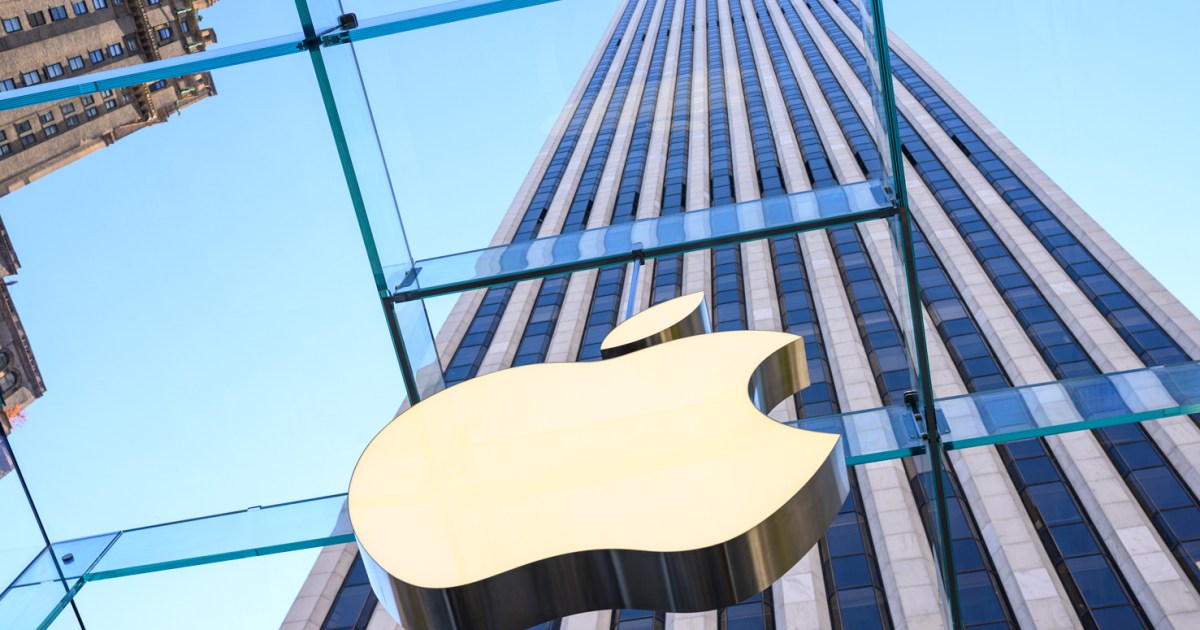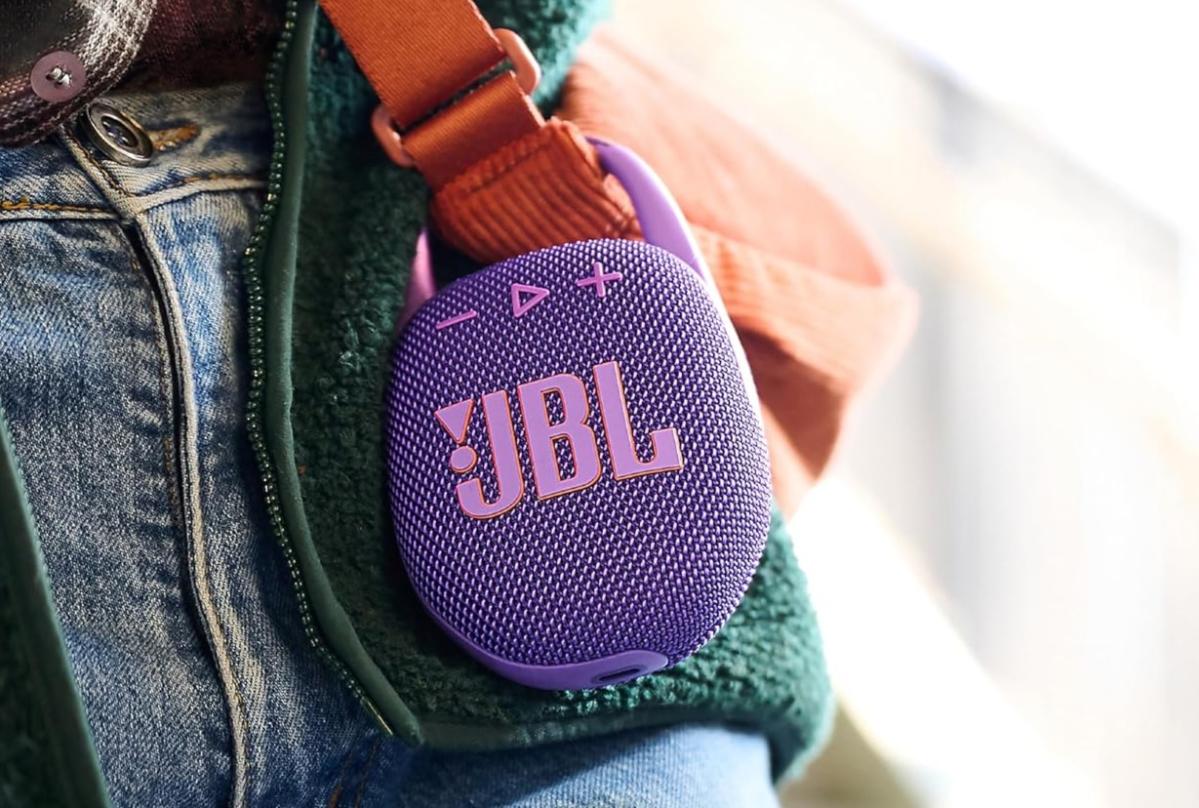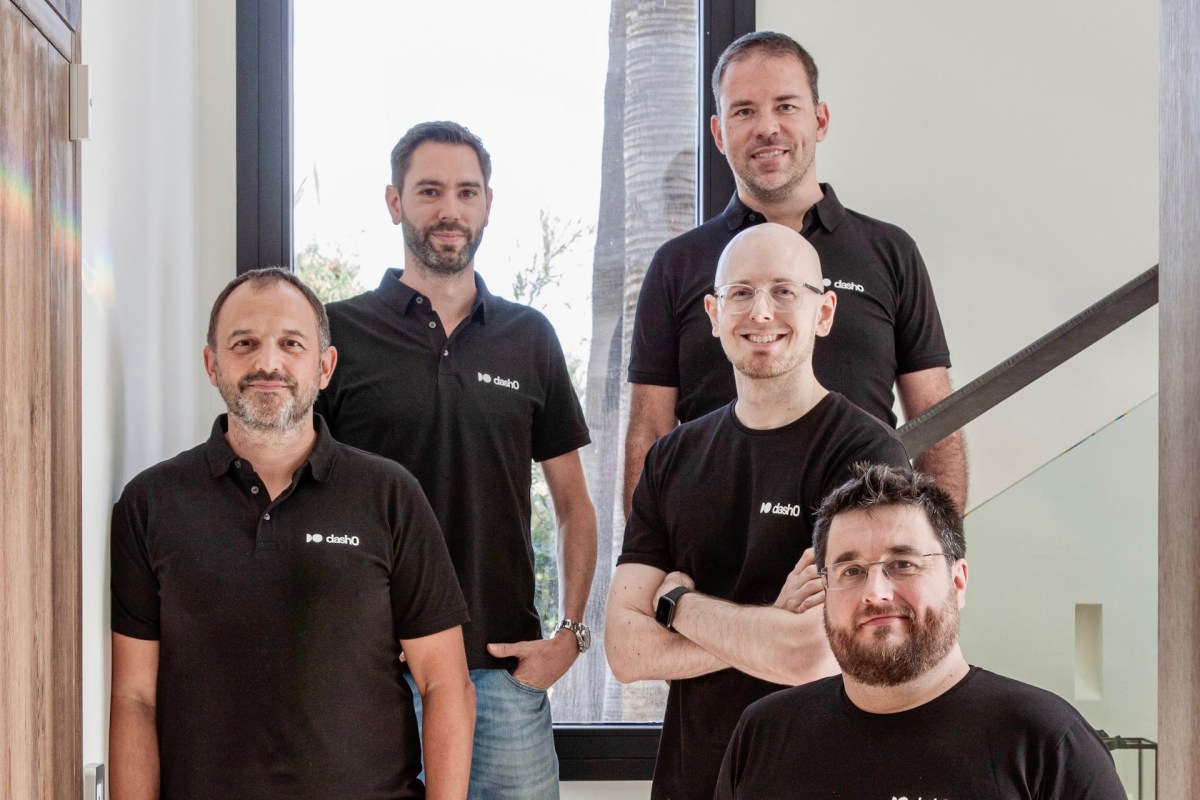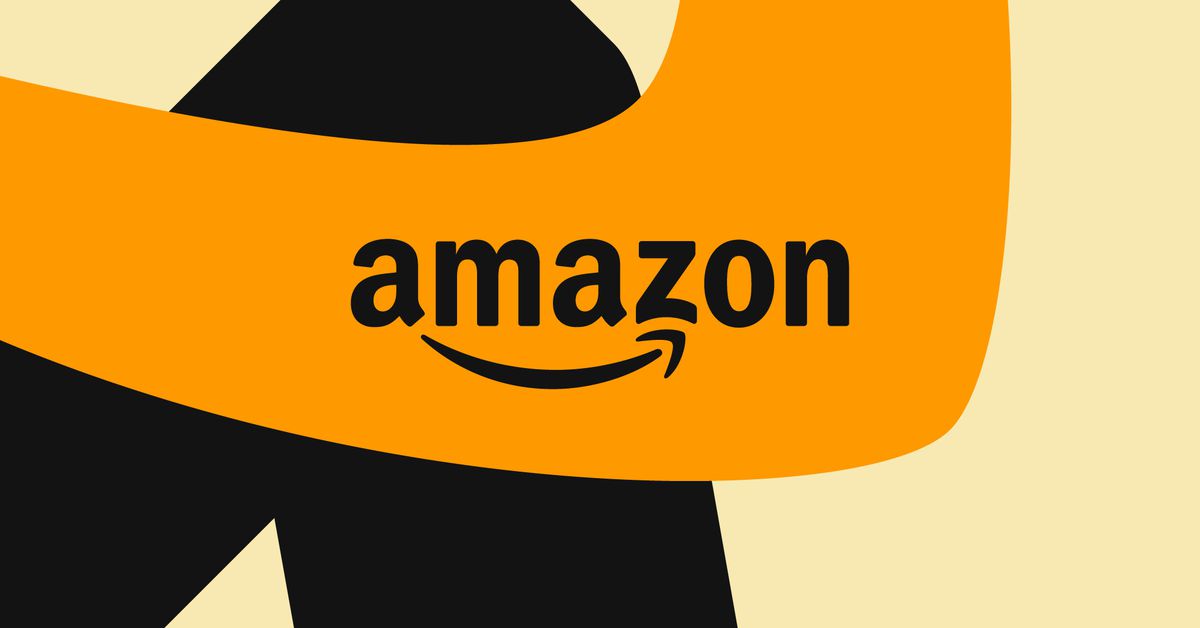The room where it happens has metal beams and harsh overhead lighting. Paper whizzes through conveyor belts on large gears near tall, human-sized cages with keypad locks.
Technology
Can Philadelphia’s ballot counters outrun election lies?

Though it resembles one, this is not a factory. It’s Philadelphia’s mail-in ballot-counting facility, where somewhere around 200,000 votes are expected to be tallied beginning on Election Day. The longer that tally takes, the more misinformation could seep into a deep well of paranoia and distrust over the democratic process — one that overflowed four years ago in a violent attack on the US Capitol.
The stakes, you could say, are high.
Pennsylvania’s 19 electoral votes could decide whether former President Donald Trump or Vice President Kamala Harris wins the 2024 presidential election. Many of the state’s ballots have already been cast through the mail. Yet Pennsylvania’s laws prohibit even beginning to process mail-in ballots until 7AM on Election Day. The result can be a serious delay in reporting election results — in 2020, The Associated Press didn’t call Pennsylvania as having been won by Joe Biden until four days after Election Day.
The state’s solution is a downright industrial ballot-counting process, which elected officials invited reporters to preview (using test ballots for demonstration purposes) in late October. It’s a highly regimented process that takes place in a sprawling warehouse in northeast Philadelphia, filled with the sounds of whirring ballot-sorting machines and the constant rifling of paper. On Election Day, workers will open hundreds of thousands of mailed ballots and feed them into machines that read and count them, keeping a careful eye on monitors flagging any irregularities. The scanned ballots will also be watched by election observers from each political party. “We do it right,” says Philadelphia City Commissioners chair Omar Sabir, a Democrat.
“The more people hear things, unfortunately, the more inclined they are to believe them.”
The city’s press tour is part of a broader effort to educate voters and reassure them that voting is safe, secure, and trustworthy. It’s an attempted bulwark against false claims about ballots being inaccurately tallied, flipped, or destroyed to skew election results.
Lisa Deeley, Democratic vice chair of the Philadelphia City Commissioners, says she doesn’t expect as long of a delay as 2020. Mail-in voting was an unusually popular option that year due to the ongoing covid-19 pandemic. But when conspiracies can ricochet across social media in seconds, every hour counts. “The more people hear things, unfortunately, the more inclined they are to believe them,” she says.
As Deeley explains, election workers are “starting from brick one” on Election Day. That means not just tallying who votes for whom, but reviewing the signatures on sealed envelopes, removing them from their secrecy sleeves, and flattening the ballots themselves. Commissioners have been “begging” for reforms to this process, Deeley says. Absent these changes, they’re left with technical and procedural solutions like buying new equipment and relying on more experienced election workers — shaving time off the clock any way they can.
“We know that the eyes of the world are going to be on Philadelphia,” City Commissioner Seth Bluestein, a Republican, told reporters gathered in the warehouse. “We are going to run the safest, most secure election in Philadelphia history.”
The process of tallying ballots — as I and other reporters see, shuffling behind Sabir around the 360,000-square-foot room — starts with what looks like an oversized Xerox machine. It feeds ballots in sealed envelopes into a conveyor belt on two gears and spits them out across a long track, sorting them into different slots based on ward and division. The machine scans barcodes on the envelopes, each one linked to a registered voter’s ID to mark the ballots as “received” so one voter can’t send multiple votes. If it was mailed without a signature or not placed in its included secrecy envelope, it’s set aside and added to a list that voters can check, letting them correct the problem with a replacement ballot.
This is as far as workers can get before Election Day, so the sorted envelopes go into secure storage until the morning of November 5th. Then, at the crack of dawn, the count begins. Twenty-two envelope extractors, built around desks where workers will help separate the envelopes from their contents once opened, run about 1,000 envelopes each per hour. Four rapid slicing machines open the yellow secrecy envelopes inside those envelopes at a rate of about 10,000 per hour. Workers remove the ballots from the now-opened secrecy envelopes — and since this process is separated from when the ballots are removed from their outer envelopes, it ensures votes stay anonymous. Now patted flat, the ballots reach the step this whole process is building up to: the count.
An election scanner is basically a gigantic Scantron machine, with a stretched-out metal S-shape that ballots glide through as the machine reads the marks voters have made. This warehouse has eight high-speed scanners, each one expected to check about 2,500 ballots per hour. (Four additional slower scanners can read 1,000 per hour.) Some ballots can’t be read — if they’ve been marked with a light-colored pen or had mistakes erased with Wite-Out, for instance. A staff of nonpartisan civil servants review these and mark the voter’s choices onto replacement ballots, which can then be scanned.
Election observers — who are selected by each party — will watch screens showing the ballots to help ensure everything is adjudicated fairly. Finally, the processed ballots go into another locked storage area. They will ultimately be kept in long-term storage for the 22 months mandated by law — just in case they’re needed for a recount.
As this count is taking place, an opposing process will be spinning up: a disinformation apparatus that aims to convince voters the election is being rigged.
In 2020, this process coalesced into the “Stop the Steal” election denial movement, culminating in an attempt to overturn the election of President Joe Biden by force. In 2024, it’s already gotten started. A group of Republicans including House Rep. Scott Perry (R-PA), who voted to sustain objections to the 2020 election results, sued Pennsylvania’s state government, demanding military and overseas ballots be set aside because of what election experts call unfounded doubts about the process. (It was also recently tossed by a judge.) Election deniers have gained seats on important state and local bodies that could give them leverage over election certification. And online, Trump mega-donor Elon Musk has set up an X community for reporting “voter fraud and irregularities,” which has already filled up with unfounded claims.
For Philadelphia’s City Commissioners, misinformation is personal. Sabir smiles as he relates one of the “craziest” conspiracy theories: a blog post that claimed he was personally taking ballots to a mobster in Atlantic City, New Jersey, to be destroyed. (It’s not clear why the mobster needs them trucked out more than 60 miles just to be shredded.) “We’re not doing crazy stuff. We’re just trying to come to do our job for the American people,” Sabir says.
The threats aren’t always amusing. Bluestein told The Verge that, while ballots were being counted in 2020, he received antisemitic threats. The harassment got so bad that Bluestein had police protection at his house the week of the election.
So far, “the heat is down” in 2024, he says. But election officials around the country are still on high alert. In Maricopa County in Arizona, another swing state, an official recently said security will be available to escort election workers to their cars. The state is also preparing for cutting-edge risks like infiltration by artificial intelligence scams, a scenario the staff roleplayed last year.
Social media platforms “are not doing as good a job as they did in 2020” with combating misinformation
Bluestein himself is trying to spot and call out false information online. In one case, he debunked an allegation — shared on X by Musk — that a nonprofit offering services to low-income and houseless individuals harvested thousands of mail-in ballots from one address. (Bluestein says “fewer than 150 ballots” were mailed there in 2020.)
His active role online is partially because he feels that social media platforms “are not doing as good a job as they did in 2020” with combating misinformation. Four years ago, platforms were on high alert for false claims, even if they often failed to enforce their policies effectively. In 2024, the situation is different. Under pressure from Trump and his allies to take a more hands-off role when it comes to election misinformation, many tech companies have relaxed the policies they had in place last time around. Meta and YouTube both rolled back rules against false claims that the 2020 election was stolen, and both Meta and X have made it more difficult for researchers on their platforms to access data used to monitor emerging threats.
At the same time, both Bluestein and Sabir say they haven’t yet seen the same level of targeted harassment and threats. Bluestein says broader misinformation claims are circulating, but he hasn’t found as many claims that single out specific officials or rank-and-file workers. Despite harassment in 2020, he says Philadelphia had no problem recruiting poll workers or staffers at the warehouse. “I think everyone understands the importance of this work, and they understand that while there could be risks associated with it, they’re all signing up to do the job.”
Misinformation often picks at tensions that already exist. Black Americans, for example, are already a group commonly targeted by disenfranchisement efforts, which Sabir says results in “misconceptions about ‘my vote doesn’t count.’” Add disinformation to that, and Sabir says it drives a notion through this community of “What am I doing? Why am I wasting my time?”
Bluestein has found that he can persuade voters through one-on-one conversations. But during that time, false claims can reach millions of voters online. “When you scale that up to build trust, it’s a lot harder,” Bluestein says. “But when you really tell people the facts and show them, they will have more faith.”
This year, election deniers are using “administrative tactics” to suppress votes
While election officials try to persuade skeptics, election deniers have increased their attacks against the administration of the voting process itself. In 2020, election deniers “used violent rhetoric as the means to suppress the vote and make it harder for folks to vote, or make the voting process seem scary and intimidating,” says Deborah Hinchey, Pennsylvania state director for the nonpartisan nonprofit All Voting is Local. This year, she is seeing election deniers use “administrative tactics to do the same thing — to suppress the vote, to make it seem an intimidating and overwhelming process, and to make folks feel like their vote may not be counted.”
But Hinchey says those efforts will fail. In 2020, Trump lawyers and other allies brought numerous cases to change the election results after the fact. Those suits invariably fizzled, and some of the lawyers who filed them have been sanctioned or disbarred. “The analysis now seems to be, ‘Well, then let’s go directly for the votes themselves, and discredit certain kinds of voters and make it seem like certain people are voting that are not, so that we can then attack all votes.’”
So far, these attempts largely haven’t panned out. While right-wing activists throughout Pennsylvania have sought to challenge voter registrations, they’ve proven unsuccessful or identified inactive voters election officials already knew about.
As for trust, a September Spotlight PA poll by MassINC Polling Group found that 63 percent of respondents were very or somewhat confident that votes in the presidential race would be counted accurately and fairly nationally. But voters had far more confidence in how elections in their own counties would be administered — 78 percent expressed confidence in the results.
Organizers are seeing more people wanting to get involved in the process of democracy, and that participation can help quell election fears, says Susan Gobreski, president of the League of Women Voters of Philadelphia. While hearing about election skeptics getting involved in the process might raise some red flags, Gobreski says it’s important to remember that “most people are actually acting in good faith.”
Arming the public and the press with trustworthy information is a smart move, says Hinchey. “You can’t dispel all bad information with good information, but you can make sure that organizations and the press have a really good understanding of how elections are actually functioning in Pennsylvania,” she says. Gobreski encourages voters to ask questions but also to “be prepared to listen to the answers.”
Ultimately, Hinchey adds, most voters are just looking for reliable information. “The average Pennsylvania voter is looking for the facts of the situation, and may take in the falseness, but when presented with facts, is going to accept that as reality.”
There’s one final option on the table for ballot tallies: a hand count. It’s common to audit samples of ballots by hand and compare them to machine results, confirming the machines are working properly. (Election officials also do preelection testing of equipment to make sure they’re properly calibrated, often on livestreams.) But in states like Georgia, election skeptics have — so far, unsuccessfully — pushed for full hand counts of every ballot. That’s a recipe for mistakes and delays.
Hand-counting has an important role in auditing elections, says Pennsylvania Secretary of the Commonwealth Al Schmidt, a Republican. “But if you’re just counting by hand, you don’t have anything to compare it against. So when people do significant numbers of hand counting, that’s where you see more errors.” Compared to machine counts, it’s also a glacial process. “If people are unhappy with how long they wait now, imagine how long” it would take without the machinery to get results, says Deeley. “It’s [like] going to Nabisco and having them make all the cookies by scratch.”
On Election Day, the machines in Philadelphia’s warehouse will flip on, rifling through thousands and thousands of envelopes, slicing and scanning. Signatures will be checked and folded. Paper will be flattened. The work of democracy will run through machines and careful human hands. It’s a tedious process, but it’s also one that’s at the very heart of the American experiment. Each ballot counted is one step closer to determining if Pennsylvania will be colored in red or blue on TV screens across the country — and possibly determining the next president. And although every minute after polls close is another minute for spreading doubt in America’s electoral system, Philadelphia’s officials are resolute.
“Philadelphia is the birthplace of democracy,” says Sabir. “I’ll be damned if democracy dies here.”
Technology
Apple surveying its own employees about smart-glasses idea


Apple is asking its employees how they feel about smart glasses as the tech giant considers entering the fledgling market, according to the latest report from the prominent Apple tipster Mark Gurman.
Citing people with knowledge of the matter, Gurman said on Monday that Apple has started gathering feedback from employees in focus groups organized by the company’s Product Systems Quality team, which is part of Apple’s hardware engineering division.
In a leaked email to select employees based at the company’s headquarters in California, the team wrote: “Testing and developing products that all can come to love is very important to what we do at Apple. This is why we are looking for participants to join us in an upcoming user study with current market smart glasses.”
Gurman said it’s not unusual for Apple to use internal focus groups when considering whether to enter a new market, as it can gain valuable feedback while keeping its plans secret, though as in this case, there’s always a chance that such activities may leak.
This is just the latest in a string of reports suggesting that Apple is moving closer toward the idea of building a pair of smart glasses designed to take on Meta’s Ray-Ban glasses, which have a built-in camera for taking photos and videos, and also let wearers make calls, listen to audio content, and ask an AI assistant questions. A recent update added the ability to send voice messages, and have the device read out incoming ones. At a special event in September, Meta CEO Mark Zuckerberg revealed that his team is developing a pair of smart specs with immersive augmented-reality capabilities for future release.
Considering how Apple is struggling to make a success of its larger and clunkier — and pricey at $3,499 — Vision Pro mixed-reality headset, the company is sure to exercise a great deal of caution when moving ahead with any plan for smart glasses, especially as the market for the device continues to be pretty niche.
And as Gurman said in his report, if the feedback from employees is positive enough to prompt Apple to pursue the project, its smart glasses are still likely to be “years away” from launch.
Technology
Google updates Pixel Screenshots, tweaks Reminders and Collections
A new update has rolled out for the Pixel Screenshots app. The latest update essentially makes “All screenshots” redundant, tweaks carousels, and adds new shortcuts.
Google updates Pixel Screenshots app after the October Feature Drop
Last month, Google rolled out the October Feature Drop for Pixel smartphones. With the update, Google essentially unleashed its Gemini Generative Artificial Intelligence (Gen AI) within the Pixel Screenshots app. Devices from the Pixel 6, going all the way up to the latest Pixel 9 Pro, will be eligible for the October Feature Drop.
Pixel device users eligible for the update will be able to use the power of Gen AI with the app to look for content. Specifically, Google announced how users could append “in Screenshots” to any command to “help you find something you saved in Pixel Screenshots, from wherever you are on your phone.” Gemini would essentially scrub through the images and look for context and content users asked.
The Pixel Screenshots app is now getting another update. It is currently available on the Play Store. Pixel Screenshots v0.24.373.08 brings with it several UI tweaks and improvements.
Google dumps “All screenshots”, and improves the ability to quickly glance at images
The Pixel Screenshots app’s homepage has two carousels for Reminders and Collections. These segments then have a grid for all the captured screenshots. Previously, users had the ability to get a full-screen “All screenshots” view.
The latest update for the Pixel Screenshots app reportedly removes the dedicated All Screenshots page. Instead, Google has placed the grid density options directly on the main screen.
Moving forward, users have the option to switch between four or three squares. Additionally, there are two rectangular previews, which offer an easily glanceable look. Needless to say, this eliminates the step of tapping on the “All screenshots” view and then adjusting grid density.
Google also replaced the “Select screenshots” option in the Collections view with an FAB (Floating Action Button). The “Edit title” and “Delete” options are now in the overflow menu.
The update also introduces app shortcuts that let users quickly “Take a photo” and “Add an image” right from your home screen. Users need not even head over to the FAB for these actions.
Google has also truncated long transcriptions/descriptions. This means the “Add a note” field or “Add to collection” options are easily available without having to scroll to the end of the text.
Technology
JBL early Black Friday deals include the Clip 5 Bluetooth speaker at an all-time-low price

Portable Bluetooth speakers are always a good option to pick up for a special someone (or yourself) when early Black Friday tech deals start to pop up. One model worth paying attention in the sales is the JBL Clip 5, which has dropped to an all-time-low price of $50. That’s 30 bucks off the regular price.
We often recommend JBL products in our buying guides, such as our ones on the best portable Bluetooth speakers and best travel gifts. They’re by and large durable devices that deliver ample volume for the beach or a cookout, for instance (but maybe don’t use it on public transit if you don’t want to risk the ire of your fellow passengers).
The JBL Clip 5 has dropped to an all-time-low price of $50. The small, portable clip-on Bluetooth speaker should come in handy for your next cookout or beach trip.
As the name suggests, the JBL Clip 5 has a built-in carabiner, making it a cinch to attach to a backpack or belt loop, to name a couple of options. JBL said it redesigned the carabiner this time around to make the opening wider. As such, it’ll be easier to attach the speaker to a wider range of things.
Although the speaker measures just 1.75 inches, it’s said to deliver solid audio with punchy bass and a maximum output of seven watts. The JBL Clip 5 should be durable as well, since it has a IP67 waterproof and dustproof rating.
It’s claimed that the speaker will run for up to 12 hours on a single charge but there’s a Playtime Boost option that adds up to three extra hours of listening time. In addition, you can pair two Clip 5s for stereo audio or connect the speaker to other Auracast-enabled models from JBL to boost the sound.
Check out all of the latest Black Friday and Cyber Monday deals here.
Technology
xAI woos developers with $25/month worth of API credits

Join our daily and weekly newsletters for the latest updates and exclusive content on industry-leading AI coverage. Learn More
We’ve known it for some time, but now it’s certain: the generative AI race is as much a contest for developers as it is for end-users.
Case-in-point: today, Elon Musk’s xAI, the spinoff startup of the social network X that uses its data to train new large language models (LLMs) such as the Grok family, today announced its application programming interface (API) is now open to the public and with it comes $25 free per month in API credits through the end of the year.
Given it’s already November, that’s just 2 months worth of free credits, or $50 total.
xAI's API is live! – try it out @ https://t.co/BZD8ZyOTTY
* 128k token context
* Function calling support
* Custom system prompt support
* Compatible with OpenAI & Anthropic SDKs
* $25/mo in free credits till EOYhttps://t.co/CCQAry6d5w https://t.co/MEEU2wkstS— xAI (@xai) November 4, 2024
Musk previously announced the xAI API was open in beta three weeks ago to the date, but apparently uptake was not enough for his liking, hence the added incentive of free dev credits.
Is $25 per month with 2 months remaining really that much of a carrot?
It doesn’t sound like much coming from the world’s wealthiest man and multi-billionaire, and it’s not really on a per user basis nor in aggregate, but it may be enough to entice some developers to at least check out xAI’s tools and platform for building apps atop of the Grok models.
Specifically, xAI’s API is priced at $5 per million input tokens and $15 per million output, compared to $2.50/$10 for OpenAI’s GPT-4o model and at $3/$15 for Anthropic’s Claude 3.5 Sonnet model. Ultimately, that means xAI’s $25 credit won’t get the developer very far — only about two million tokens in and one million out per month. For reference, a million tokens is equivalent to 7-8 novels worth of words.
The context limit, or how many tokens can be inputted or outputted in one interaction through the API, is around 128,000, similar to OpenAI’s GPT-4o and below Anthropic’s 200,000 token window, and well below Google Gemini 1.5 Flash’s 1-million context window length.
Also, from my brief test of the xAPI, I was only able to access grok-beta and text only, no image generation capabilities such as those found on Grok 2 (powered by Black Forest Labs’ Flux.1 model).
New Grok models coming soon
According to xAI’s blog post, this is actually “a preview of a new Grok model that is currently in the final stages of development,” and a new Grok “vision model will be available next week.”
In addition, xAI notes that the grok-beta supports “function calling,” or the ability for the LLM to take commands from a user and access functions of other connected apps and services, even executing them on the user’s behalf (if the connected app allows such access).
Compatible with the competition
Furthermore, the xAI account on the social network X posted that the xAI API is “compatible with OpenAI & Anthropic SDKs,” or the software development kits of different web tools used by developers of those platforms, meaning it should be relatively easy to switch out those models for grok-beta or others on the xAI platform.
Musk’s xAI recently switched on its “Colossus” supercluster of 100,000 Nvidia H100 GPUs in Memphis, Tennessee, which is being used to train its new models — the largest or one of the largest in the world — so apparently that facility is already hard at work.
What do you think? Is it enough to get the developers out in the VentureBeat audience to try building atop xAI? Let me know: carl.franzen@venturebeat.com.
Source link
Technology
Datadog challenger Dash0 aims to dash observability bill shock

The end of zero-interest rates has driven companies to look for savings wherever they can, but one area continues to be a major budget drain. Observability — collecting and understanding data and systems — typically remains an organization’s second-highest cloud expenditure, right after cloud provisioning itself. People have even gone so far as to talk of an observability cost crisis, underscored by anecdotes like Coinbase spending $65 million on its Datadog bill.
And why is observability so pricey and important? Complex cloud architectures and microservices are here to stay, and with security issues and service outages all too common, ops teams need observability data to keep systems running.
Now a startup called Dash0 is launching to address the cost issue — if not by being cheaper, then by at least making buying and paying for their services easier.
Dash0 — pronounced “Dash-zero” — is a Datadog competitor whose pitch doesn’t revolve around drastically lowering observability costs. Founder Mirko Novakovic (left in the picture above) still expects companies to spend 10% to 20% of cloud costs on this budget item. But he and his team want to improve transparency, both in terms of pricing and of observability itself.
Dash0 says it can do this by way of how it’s built, by fully leveraging the open source observability framework OpenTelemetry (aka OTel), Novakovic told TechCrunch, which includes a feature called Semantic conventions that allows someone, “at any given time, [to] see exactly which service or which developer or which application creates how much cost on the observability side,” he said.
There are other companies, such as Signoz, that describe themselves as OTel-native, but Dash0’s positioning has resonated with investors. It raised a $9.5 million seed funding round led by Accel, with participation from Dig Ventures, the investment firm of MulesSoft founder Ross Mason.
Novakovic’s track record may have also helped. His previous company, Instana, also backed by Accel, was acquired by IBM at the end of 2020 for $500 million, a price that has never been publicly disclosed before now. Several other Instana alums are also now part of the Dash0 team.
If Dash0 is built on OTel, it’s also trying to improve it. The framework has actually been around since 2019, but “it is not that easy to use at the moment,” Novakovic said. “Vendors have to do a lot of work in making sure that it gets at least as easy as installing a Datadog agent. That’s where we are still lagging behind the proprietary folks.”
As a company, Dash0 hopes to unlock OTel’s benefits — vendor-agnostic standardized data — but with an intuitive UI, dashboards, and integrations with Slack, email and other tools. Its initial target customers are companies that have between 50 and 5,000 employees.
The company is now launching publicly, but it won’t heavily invest in sales and marketing until it is sure it has hit product-market fit. In the meantime, Novakovic said, its resources will go toward growing the tech and product side of its team, which now consists of 21 people, of whom 19 are engineers, all working remotely.
Its next 10 hires will include a developer relations specialist who will also contribute to driving the adoption of OpenTelemetry as a solid alternative to proprietary options. On that front, the company intends to work with other OTel-related startups while making sure that “missing parts” like dashboards and query languages fall into place with projects like Perses and PromQL. “That’s a community effort together with the customers,” Novakovic said.
Technology
What time do Black Friday deals start at Amazon, Walmart, and other retailers?

Black Friday officially kicks off on November 29th, but if you plan to make that the only day you buy gifts this holiday season, you’re missing out. Several prominent retailers, including Best Buy and Target, have already started rolling out their holiday discounts online and in-store. Both retailers are offering price protection through most of the holiday shopping season as well, so if you buy early and the same item drops to a lower price, you can retroactively get that better deal.
Whether you take advantage of the slew of early holiday deals or hold off until the day after Thanksgiving, it’s important to know how every major retailer is handling the shopping event this year. If you plan to spend some cash, here are the schedules and expectations for Amazon, Walmart, Target, and all the major retailers we know of.
Amazon has yet to announce a full Black Friday playbook, but it does have a landing page full of holiday deals, which the retailer may update and convert into its main hub for Black Friday — as well as Cyber Monday. There aren’t a ton of noteworthy early deals, at least in terms of tech, but Amazon is currently discounting a few pairs of Beats headphones. This includes the Beats Solo 4 and Beats Studio Pro, which are on sale for $99.99 ($100 off) and $169.99 ($180 off), respectively.
Just be aware that Amazon does not offer price matching, so price “protection” for many Amazon shoppers means buying the item at the lower price point and returning the original — which, unfortunately, is pretty wasteful.
Black Friday has already kicked off to some degree at Best Buy, with the retailer offering various specials via its “Holiday Savings” event, which runs through November 7th. That being said, the first wave of early “doorbuster” Black Friday deals will go live on Friday, November 8th, with new doorbusters to follow every Friday until November 20th. They’re open to everybody, though those who subscribe to My Best Buy Plus or My Best Buy Total will get access every Thursday before they become more widely available.
Best Buy’s main Black Friday event, which will feature returning doorbusters and new deals, is slated to begin on November 21st (yes, that’s a full eight days for a singular “Black Friday Sale”). The retailer’s Cyber Monday promo, meanwhile, will kick off on Sunday, December 1st, meaning Best Buy is running sales throughout the entire month of November.
Best Buy shoppers also get price protection, ensuring that if you purchase a qualifying item and it goes on to receive a bigger discount between November 1st and December 31st, you can request a refund for the difference through January 14th. As with some of the Black Friday promos, you’ll want to make sure you’re signed in with your My Best Buy account while browsing to ensure you’re getting the lowest price.
Like Best Buy, Target has launched a “Deal of the Day” holiday promo, which runs through December 24th for members of its free Target Circle program. Target will also host an Early Black Friday Sale, which will kick off on November 7th and last through November 9th.
Each Sunday in November, Target will drop new deals at brick-and-mortar stores and online, which you can preview a week beforehand using Target’s weekly circular. Target says it will be offering the best prices throughout the holiday season; however, the retailer also has a holiday price-match policy in place if it happens to offer a better deal on an item between now and December 24th. Just keep in mind that you may need to return to the store from which you purchased the product to receive a price match or call Target’s guest services for online purchases.
Walmart plans to start rolling out its Black Friday deals in multiple waves. The first begins online at 12PM ET on Monday, November 11th, for paying Walmart Plus subscribers (or 5PM ET for everybody else). An in-store sale will follow on November 15th at 6AM local time.
The second wave begins online at 12PM ET on Monday, November 25th, for Walmart Plus members (or 5PM ET for everybody else). An in-store sale will follow on Black Friday proper (November 29th) at 6AM local time.
Walmart will then hold its Cyber Monday sale online for Walmart Plus members beginning at 5PM ET on December 1st before opening it to non-members at 8PM ET.
If you want to get early access to any of the aforementioned waves, Walmart is offering 50 percent off an annual Walmart Plus membership through December 2nd. The current promo brings the cost of its premium service down to $49 a year. Along with early access to all of Walmart’s holiday discounts, Plus members also get free delivery on millions of products.
There is no word yet on Black Friday details from GameStop. We expect to hear more soon regarding store hours on Black Friday and possibly Thanksgiving, as well as some specifics regarding what kind of gaming deals it plans to offer throughout the holiday season.
Newegg has already started dropping its Black Friday deals. Like other retailers, it also offers price protection, so you can choose to buy early without having to worry about potential discounts down the line. Newegg is noting price-protected items with a colorful badge near the product’s name through November 20th, and if said product drops in price on or before November 30th, Newegg will automatically refund the difference to the original payment method.
Costco recently announced two deals events ahead of Black Friday, including a “Holiday Savings” event that runs through December 2nd online and in-store. There’s also an online “November Savings” promo, which runs through November 30th. Costco will continue to drop new deals throughout November, which you can preview here. There aren’t a ton of notable tech highlights (yet), but Costco will be discounting the noise-canceling Bose QuietComfort Ultra Earbuds to $229.99 ($70 off) starting on November 18th. Costco will also throw in a $50 gift card from one of several retailers, including Apple and Google.
-

 Science & Environment2 months ago
Science & Environment2 months agoHow to unsnarl a tangle of threads, according to physics
-

 Technology1 month ago
Technology1 month agoIs sharing your smartphone PIN part of a healthy relationship?
-

 Science & Environment2 months ago
Science & Environment2 months ago‘Running of the bulls’ festival crowds move like charged particles
-

 Science & Environment2 months ago
Science & Environment2 months agoHyperelastic gel is one of the stretchiest materials known to science
-

 Technology2 months ago
Technology2 months agoWould-be reality TV contestants ‘not looking real’
-

 Science & Environment1 month ago
Science & Environment1 month agoX-rays reveal half-billion-year-old insect ancestor
-

 Science & Environment2 months ago
Science & Environment2 months agoMaxwell’s demon charges quantum batteries inside of a quantum computer
-

 Science & Environment2 months ago
Science & Environment2 months agoSunlight-trapping device can generate temperatures over 1000°C
-

 Money1 month ago
Money1 month agoWetherspoons issues update on closures – see the full list of five still at risk and 26 gone for good
-

 Technology1 month ago
Technology1 month agoGmail gets redesigned summary cards with more data & features
-

 Sport1 month ago
Sport1 month agoAaron Ramsdale: Southampton goalkeeper left Arsenal for more game time
-

 Science & Environment2 months ago
Science & Environment2 months agoPhysicists have worked out how to melt any material
-

 Football1 month ago
Football1 month agoRangers & Celtic ready for first SWPL derby showdown
-

 Sport1 month ago
Sport1 month agoBoxing: World champion Nick Ball set for Liverpool homecoming against Ronny Rios
-

 Technology1 month ago
Technology1 month agoEpic Games CEO Tim Sweeney renews blast at ‘gatekeeper’ platform owners
-

 Technology1 month ago
Technology1 month agoUkraine is using AI to manage the removal of Russian landmines
-

 News1 month ago
News1 month agoWoman who died of cancer ‘was misdiagnosed on phone call with GP’
-

 MMA4 weeks ago
MMA4 weeks ago‘Dirt decision’: Conor McGregor, pros react to Jose Aldo’s razor-thin loss at UFC 307
-

 Science & Environment2 months ago
Science & Environment2 months agoLaser helps turn an electron into a coil of mass and charge
-

 Technology1 month ago
Technology1 month agoRussia is building ground-based kamikaze robots out of old hoverboards
-

 Science & Environment2 months ago
Science & Environment2 months agoQuantum ‘supersolid’ matter stirred using magnets
-

 Science & Environment2 months ago
Science & Environment2 months agoLiquid crystals could improve quantum communication devices
-

 MMA1 month ago
MMA1 month agoDana White’s Contender Series 74 recap, analysis, winner grades
-

 Technology1 month ago
Technology1 month agoSamsung Passkeys will work with Samsung’s smart home devices
-

 News1 month ago
News1 month ago‘Blacks for Trump’ and Pennsylvania progressives play for undecided voters
-

 MMA4 weeks ago
MMA4 weeks ago‘Uncrowned queen’ Kayla Harrison tastes blood, wants UFC title run
-

 Science & Environment2 months ago
Science & Environment2 months agoA new kind of experiment at the Large Hadron Collider could unravel quantum reality
-
Business1 month ago
how UniCredit built its Commerzbank stake
-

 Technology1 month ago
Technology1 month agoMicrosoft just dropped Drasi, and it could change how we handle big data
-

 Science & Environment2 months ago
Science & Environment2 months agoWhy this is a golden age for life to thrive across the universe
-

 Technology1 month ago
Technology1 month agoCheck, Remote, and Gusto discuss the future of work at Disrupt 2024
-

 News1 month ago
News1 month agoNavigating the News Void: Opportunities for Revitalization
-

 News1 month ago
News1 month agoRwanda restricts funeral sizes following outbreak
-

 TV1 month ago
TV1 month agoসারাদেশে দিনব্যাপী বৃষ্টির পূর্বাভাস; সমুদ্রবন্দরে ৩ নম্বর সংকেত | Weather Today | Jamuna TV
-

 MMA1 month ago
MMA1 month agoPereira vs. Rountree prediction: Champ chases legend status
-

 Sport1 month ago
Sport1 month ago2024 ICC Women’s T20 World Cup: Pakistan beat Sri Lanka
-

 Technology1 month ago
Technology1 month agoWhy Machines Learn: A clever primer makes sense of what makes AI possible
-

 News1 month ago
News1 month agoMassive blasts in Beirut after renewed Israeli air strikes
-

 Business1 month ago
Business1 month agoWhen to tip and when not to tip
-

 Entertainment1 month ago
Entertainment1 month agoBruce Springsteen endorses Harris, calls Trump “most dangerous candidate for president in my lifetime”
-

 Technology1 month ago
Technology1 month agoMicrophone made of atom-thick graphene could be used in smartphones
-

 Business1 month ago
Business1 month agoWater companies ‘failing to address customers’ concerns’
-

 News1 month ago
News1 month agoCornell is about to deport a student over Palestine activism
-

 Sport1 month ago
Sport1 month agoWXV1: Canada 21-8 Ireland – Hosts make it two wins from two
-

 Football1 month ago
Football1 month ago'Rangers outclassed and outplayed as Hearts stop rot'
-

 Science & Environment2 months ago
Science & Environment2 months agoQuantum forces used to automatically assemble tiny device
-

 Science & Environment2 months ago
Science & Environment2 months agoITER: Is the world’s biggest fusion experiment dead after new delay to 2035?
-

 News2 months ago
News2 months ago▶️ Hamas in the West Bank: Rising Support and Deadly Attacks You Might Not Know About
-

 Science & Environment2 months ago
Science & Environment2 months agoNuclear fusion experiment overcomes two key operating hurdles
-

 Sport1 month ago
Sport1 month agoChina Open: Carlos Alcaraz recovers to beat Jannik Sinner in dramatic final
-

 Football1 month ago
Football1 month agoWhy does Prince William support Aston Villa?
-

 MMA1 month ago
MMA1 month agoKayla Harrison gets involved in nasty war of words with Julianna Pena and Ketlen Vieira
-

 News1 month ago
News1 month ago▶ Hamas Spent $1B on Tunnels Instead of Investing in a Future for Gaza’s People
-
Business1 month ago
Top shale boss says US ‘unusually vulnerable’ to Middle East oil shock
-

 Technology1 month ago
Technology1 month agoMusk faces SEC questions over X takeover
-

 Technology1 month ago
Technology1 month agoSingleStore’s BryteFlow acquisition targets data integration
-

 News1 month ago
News1 month agoHull KR 10-8 Warrington Wolves – Robins reach first Super League Grand Final
-

 Sport1 month ago
Sport1 month agoPremiership Women’s Rugby: Exeter Chiefs boss unhappy with WXV clash
-

 Science & Environment2 months ago
Science & Environment2 months agoA slight curve helps rocks make the biggest splash
-

 Technology1 month ago
Technology1 month agoMeta has a major opportunity to win the AI hardware race
-

 Womens Workouts1 month ago
Womens Workouts1 month ago3 Day Full Body Women’s Dumbbell Only Workout
-
Business1 month ago
Bank of England warns of ‘future stress’ from hedge fund bets against US Treasuries
-

 Technology1 month ago
Technology1 month agoLG C4 OLED smart TVs hit record-low prices ahead of Prime Day
-

 MMA1 month ago
MMA1 month ago‘I was fighting on automatic pilot’ at UFC 306
-

 Sport1 month ago
Sport1 month agoShanghai Masters: Jannik Sinner and Carlos Alcaraz win openers
-

 Sport1 month ago
Sport1 month agoCoco Gauff stages superb comeback to reach China Open final
-

 News1 month ago
News1 month agoGerman Car Company Declares Bankruptcy – 200 Employees Lose Their Jobs
-

 Sport1 month ago
Sport1 month agoWales fall to second loss of WXV against Italy
-
Business1 month ago
DoJ accuses Donald Trump of ‘private criminal effort’ to overturn 2020 election
-
Business1 month ago
Sterling slides after Bailey says BoE could be ‘a bit more aggressive’ on rates
-

 TV1 month ago
TV1 month agoTV Patrol Express September 26, 2024
-

 Technology1 month ago
Technology1 month agoUniversity examiners fail to spot ChatGPT answers in real-world test
-

 Science & Environment2 months ago
Science & Environment2 months agoTime travel sci-fi novel is a rip-roaringly good thought experiment
-

 Sport1 month ago
Sport1 month agoSturm Graz: How Austrians ended Red Bull’s title dominance
-

 MMA1 month ago
MMA1 month agoKetlen Vieira vs. Kayla Harrison pick, start time, odds: UFC 307
-

 Technology1 month ago
Technology1 month agoThe best shows on Max (formerly HBO Max) right now
-

 Technology1 month ago
Technology1 month agoIf you’ve ever considered smart glasses, this Amazon deal is for you
-

 Money4 weeks ago
Money4 weeks agoTiny clue on edge of £1 coin that makes it worth 2500 times its face value – do you have one lurking in your change?
-

 Technology1 month ago
Technology1 month agoJ.B. Hunt and UP.Labs launch venture lab to build logistics startups
-

 Technology1 month ago
Technology1 month agoQuoroom acquires Investory to scale up its capital-raising platform for startups
-

 MMA1 month ago
MMA1 month agoPennington vs. Peña pick: Can ex-champ recapture title?
-
Business1 month ago
The search for Japan’s ‘lost’ art
-

 Sport1 month ago
Sport1 month agoMan City ask for Premier League season to be DELAYED as Pep Guardiola escalates fixture pile-up row
-

 Science & Environment2 months ago
Science & Environment2 months agoNerve fibres in the brain could generate quantum entanglement
-

 News2 months ago
News2 months ago▶️ Media Bias: How They Spin Attack on Hezbollah and Ignore the Reality
-

 Technology1 month ago
Technology1 month agoAmazon’s Ring just doubled the price of its alarm monitoring service for grandfathered customers
-
Travel1 month ago
World of Hyatt welcomes iconic lifestyle brand in latest partnership
-

 Sport4 weeks ago
Sport4 weeks agoNew Zealand v England in WXV: Black Ferns not ‘invincible’ before game
-

 Business1 month ago
Business1 month agoStocks Tumble in Japan After Party’s Election of New Prime Minister
-

 Technology1 month ago
Technology1 month agoTexas is suing TikTok for allegedly violating its new child privacy law
-

 Technology1 month ago
Technology1 month agoOpenAI secured more billions, but there’s still capital left for other startups
-

 News1 month ago
News1 month agoFamily plans to honor hurricane victim using logs from fallen tree that killed him
-

 Money1 month ago
Money1 month agoPub selling Britain’s ‘CHEAPEST’ pints for just £2.60 – but you’ll have to follow super-strict rules to get in
-

 News1 month ago
News1 month agoTrump returns to Pennsylvania for rally at site of assassination attempt
-

 Sport4 weeks ago
Sport4 weeks agoURC: Munster 23-0 Ospreys – hosts enjoy second win of season
-

 Entertainment1 month ago
Entertainment1 month agoNew documentary explores actor Christopher Reeve’s life and legacy
-

 Science & Environment2 months ago
Science & Environment2 months agoHow to wrap your mind around the real multiverse
-

 MMA1 month ago
MMA1 month agoHow to watch Salt Lake City title fights, lineup, odds, more
-

 MMA1 month ago
MMA1 month agoUFC 307’s Ketlen Vieira says Kayla Harrison ‘has not proven herself’
-
Business1 month ago
‘Let’s be more normal’ — and rival Tory strategies


You must be logged in to post a comment Login